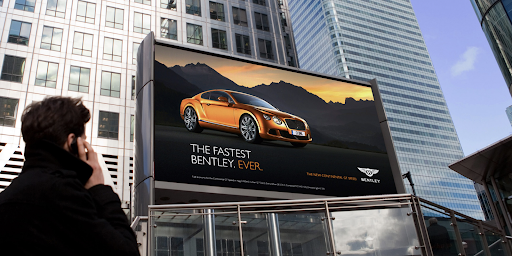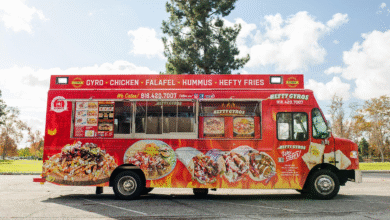How Out-of-Home Advertising Shapes the World Around Us

If you’ve ever been stuck in traffic, glancing absent-mindedly out the window only to find yourself reading a cheeky slogan on a billboard—or if you’ve walked past a bus stop and noticed an ad that made you laugh—then you’ve already been a participant in one of the oldest and most enduring marketing strategies: out-of-home advertising.
It’s the art of speaking to people where they live their lives, not on screens or in inboxes, but in the physical world—streets, stations, stadiums, and skylines. And unlike the fleeting nature of digital ads, which can vanish with a scroll or a click, out-of-home campaigns stand their ground. They’re part of the scenery, quietly working their magic 24/7.
Why It Still Works in a Digital Age
It might seem counterintuitive that in an era where brands can target you with laser-precision online, companies still invest in giant posters and bus wraps. But here’s the thing: human beings are still physical creatures. We walk down streets, wait for trains, sit in cafes with a view of the road, and look up when something large and bright catches our attention.
Psychologically, out-of-home advertising benefits from unavoidable presence. You can block pop-ups, skip YouTube ads, or mute your phone during sponsored reels—but you can’t mute the massive mural covering the side of a building you walk past daily. Over time, that exposure seeps in, building brand familiarity in a way digital ads often can’t replicate.
There’s also a credibility factor. When a brand invests in a prime billboard in the middle of Sydney’s CBD or a full-train wrap on the London Underground, it signals stability and success. The ad doesn’t just sell a product—it sells trust.
From Painted Walls to Digital Screens
Out-of-home advertising has evolved dramatically from its origins. Centuries ago, merchants painted signs on buildings to lure customers into their shops. In the early 1900s, billboards began dotting highways, turning long drives into rolling galleries of slogans and jingles.
Today, it’s a whole different ballgame. LED technology has transformed static billboards into dynamic displays, capable of showing multiple ads in rotation or changing in real time. Some digital out-of-home (DOOH) campaigns even respond to the weather—imagine an ice cream brand flashing a sunny-day special the moment temperatures rise above 28°C.
But while the technology has changed, the principle remains the same: meet people where they are.
The Creativity Advantage
Perhaps the biggest advantage of out-of-home advertising is the room it gives for creativity. When you’re working with a giant canvas on the side of a building, subtlety isn’t the point—you want bold, memorable visuals and clever copy that sticks.
Take, for example, the famous “Got Milk?” billboards in the U.S. They didn’t just promote dairy; they became part of pop culture. Or the time McDonald’s turned bus shelters into warm, glowing “coffee cups” in winter, literally wrapping commuters in brand warmth.
Even small, local brands have leveraged this medium with flair. A boutique bakery in Melbourne once placed mouth-watering close-up posters of their croissants at tram stops near office districts. Sales spiked—not because the ad explained their baking process or listed prices, but because hungry commuters couldn’t get those flaky layers out of their heads.
More Than Just Billboards
When people hear “out-of-home advertising,” they often think only of billboards. But the category is much broader and includes:
- Transit advertising: Ads on buses, trains, taxis, and ride-share vehicles.
- Street furniture: Bus stops, benches, kiosks, and even rubbish bins.
- Experiential installations: Interactive pop-ups, branded photo spots, or augmented reality murals.
- Place-based media: Ads in malls, gyms, airports, stadiums, and cinemas.
The best campaigns often blend multiple formats. A beverage brand might use train station posters to tease a new flavour, then follow up with sampling booths inhttps://westernbusiness.co.uk/ shopping strips, making the connection between awareness and action almost immediate.
The Measurability Myth
One of the biggest criticisms of out-of-home advertising has been measurability. In the past, it was difficult to prove exactly how many people saw a particular billboard or whether it directly led to sales. But that’s changing fast.
Modern campaigns can pair location data from mobile devices with ad placement to estimate exposure. QR codes, social hashtags, and trackable discount codes bridge the gap between physical impressions and online engagement. For instance, a fashion retailer might put up a cheeky billboard with “Scan me for 20% off” in a trendy suburb. Not only does it grab attention, but it also drives a measurable digital action.
Why Brands Keep Coming Back
At its core, out-of-home advertising works because it’s both universal and democratic. It doesn’t require an internet connection, a subscription, or a social media account. A billboard doesn’t care about your browsing history; it simply exists in the public space for anyone to see.
And in an era of increasing ad fatigue, there’s something refreshing about a well-executed, non-intrusive campaign that you stumble upon in the real world. You’re not being interrupted—you’re being invited to look.
The Future: Smart, Sustainable, and Interactive
The next chapter of out-of-home advertising is shaping up to be even more engaging. Imagine bus stops with solar-powered digital panels that change ads based on time of day or audience demographics. Or augmented reality billboards that let you point your phone and see an ad come to life in 3D.
Sustainability is also becoming a key driver. Many advertisers are experimenting with eco-friendly materials, energy-efficient lighting, and even “living billboards” made from plants. The message? Brands can be big and visible without being wasteful.
Final Thoughts
Out-of-home advertising may be one of the oldest forms of marketing, but it’s far from outdated. In fact, its power lies in its ability to adapt—whether that’s embracing digital interactivity, weaving in sustainability, or finding fresh ways to surprise passers-by.
The next time you’re out and about, pay attention to the ads around you. Which ones do you actually notice? Which make you smile, pause, or even take a photo? That’s the quiet magic of this medium—it’s not just about selling products, but about becoming part of the lived experience of a city.
And in a world where so much of our attention is fragmented, there’s something uniquely powerful about a message you can’t swipe away.



